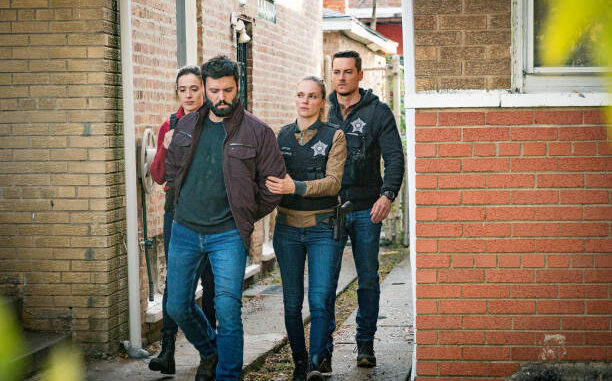
Amidst the fast-paced action and high-stakes investigations of Chicago P.D., there’s one division that operates a little differently—but is just as essential to keeping the city safe. The Mounted Patrol Unit brings a unique blend of tradition, strategy, and deep trust between officers and their equine partners.
While many associate policing with squad cars and foot patrols, the Mounted Unit provides an unparalleled advantage in crowd control, community engagement, and even crime prevention. But what truly sets this team apart is the extraordinary bond between the officers and their horses—a relationship built on trust, rigorous training, and mutual respect.
A Partnership Unlike Any Other
Unlike traditional police units, where officers work alongside fellow humans, the Mounted Patrol officers rely on their four-legged partners just as much as their fellow officers. Horses in this unit aren’t just tools for the job—they’re trusted companions, each with a distinct personality and intelligence that makes them an integral part of the force.
From the moment an officer is assigned a horse, the partnership begins with intensive training, ensuring that both rider and mount learn to anticipate each other’s movements and communicate effectively—even in high-stress situations. This trust is crucial, especially when navigating large crowds, chaotic protests, or tense situations where maintaining control is paramount.
Training That Goes Beyond the Basics
Every horse in Chicago P.D.’s Mounted Patrol undergoes extensive training to prepare them for the challenges of law enforcement. Unlike ordinary riding horses, these mounts must remain calm in the face of sirens, loud noises, and unpredictable crowds. They learn to respond to subtle cues from their riders, allowing for precise maneuvering even in dense urban environments.
Officers also receive specialized training, not just in horsemanship, but in reading their horse’s body language and emotions. Just like any great partnership, understanding and trust are key—an officer must be able to tell when their horse is stressed, tired, or sensing danger.
A Trust That Saves Lives
The deep connection between officer and horse goes beyond training—it can mean the difference between success and failure in critical moments. Mounted officers are often deployed to control large crowds at protests, sporting events, and parades, where their height advantage allows them to oversee situations better than those on foot.
Their mere presence can also de-escalate tense confrontations, as people tend to react differently to officers on horseback than to those in squad cars or riot gear. And in some cases, these horses have even helped save their officers from dangerous situations, sensing threats before humans do and moving to protect their riders instinctively.
A Bond That Extends Beyond Duty
For many officers, their relationship with their horse doesn’t stop when the shift ends. Mounted patrol officers often develop deep emotional connections with their equine partners, spending hours grooming, feeding, and caring for them. The time spent together—both on and off duty—solidifies a bond that many describe as one of the most rewarding relationships of their careers.
Retirement for these horses is also treated with honor and respect. Many of them go on to live peaceful lives on farms, often adopted by the very officers who worked alongside them for years. It’s a testament to the lifelong impact these animals have on their human partners—and a reflection of the deep respect they earn throughout their service.
An Irreplaceable Force in Chicago
While modern policing is constantly evolving with technology and new tactics, Chicago P.D.’s Mounted Patrol Unit remains a timeless and invaluable asset to the city. Their ability to connect with the community, manage large-scale events, and bring a unique advantage to law enforcement operations proves that the bond between officer and horse is more than just a working relationship—it’s a partnership built on trust, loyalty, and mutual understanding.
